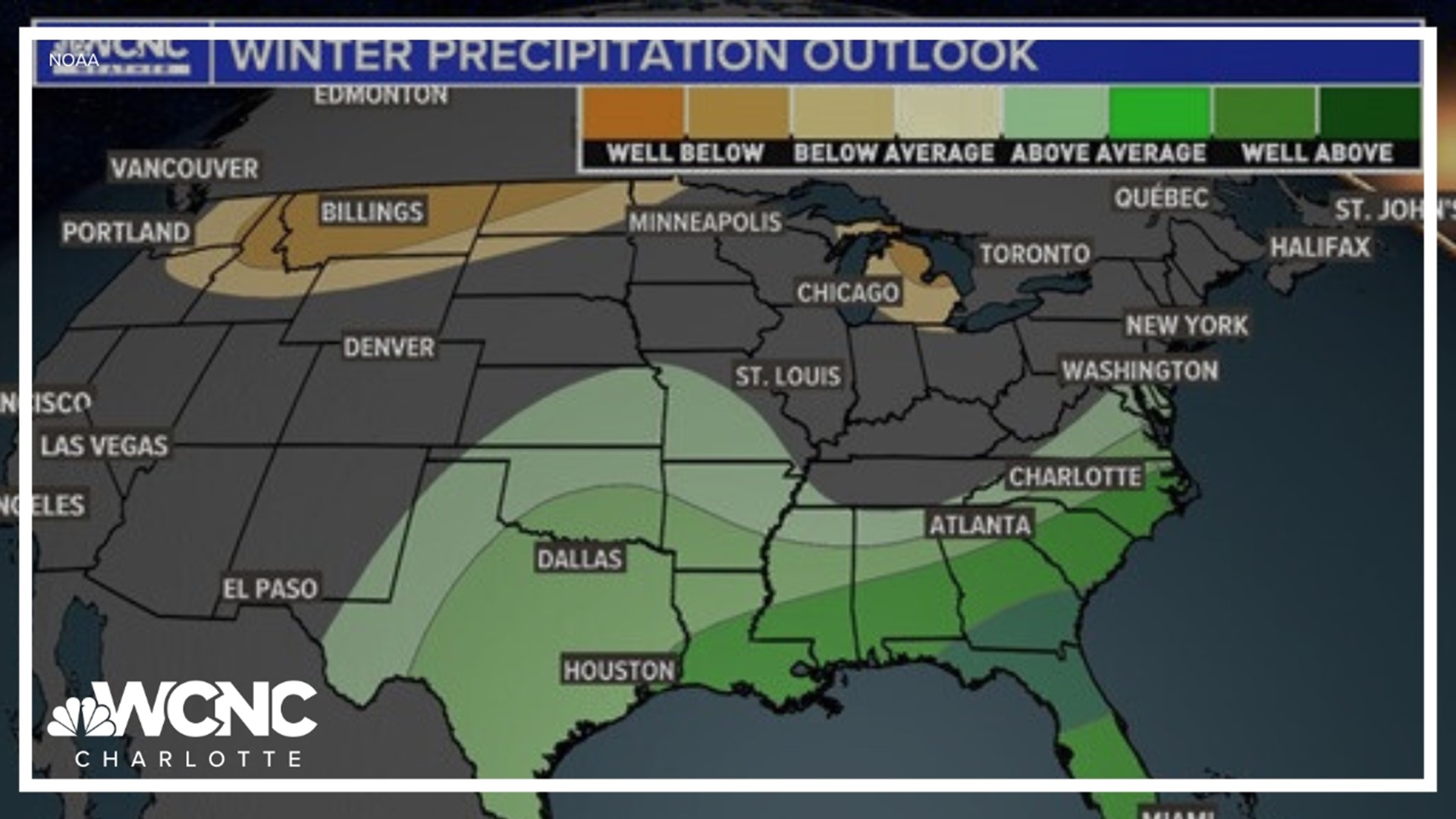CHARLOTTE, N.C. — Winter is knocking on the doorstep with meteorological fall already halfway over.
On Thursday, NOAA's Climate Prediction Center released its 2024 Winter Outlook, which provides general forecast guidance about what to expect during 'meteorological winter,' which stretches across December, January and February.
For the first time in four years, an El Niño is in place ahead of the winter months in the United States. El Niño pushes the Pacific jet stream south. This change introduces wetter and warmer conditions across the Southeast.
Although the northern half of the country is the most likely to experience warmer-than-normal temperatures during this climate cycle, the Carolinas are also leaning slightly warmer too.
An enhanced polar jet stream, which drives storm tracks, is also expected to drive further south. This points to wetter-than-average conditions for much of the South, including the Carolinas.
This is expected to help with the ongoing drought across the central and southern United States. Approximately a third of the country is currently experiencing drought conditions.
An important thing to remember about NOAA's seasonal predictions: this is an average over a three-month period. Even if Charlotte is expected to be warmer and wetter than normal overall, a cold spell or dry period can still occur during those three months. Additionally, the outlook will likely change as scientists see how El Niño evolves. NOAA expects to update its outlook on November 16, which is around the same time that WCNC Charlotte Chief Meteorologist Brad Panovich will be issuing his hyperlocal winter weather outlook.
What is El Niño
El Niño is the warm phase of the El Niño Southern Oscillation (ENSO) climate pattern. It is characterized by warmer-than-normal waters in the Pacific Ocean.
During the winter months, the biggest impact across the Southeast has been a more active storm track allowing for more rain events. This can sometimes lead to flooding events.
ENSO patterns shift back and forth irregularly every two to seven years, according to NOAA. These predictable shifts in ocean surface temperature impact the winter months but also disrupt wind and rainfall patterns in the tropics.
The opposite of El Niño is La Niña. Both climate patterns also have a direct impact on other seasons, including the hurricane season.
Contact Brittany Van Voorhees at bvanvoorhe@wcnc.com and follow her on Facebook, X and Instagram.
WCNC Charlotte’s Weather IQ YouTube channel gives detailed explainers from the WCNC Charlotte meteorologists to help you learn and understand weather, climate and science. Watch previous stories where you can raise your Weather IQ in the YouTube playlist below and subscribe to get updated when new videos are uploaded. \

